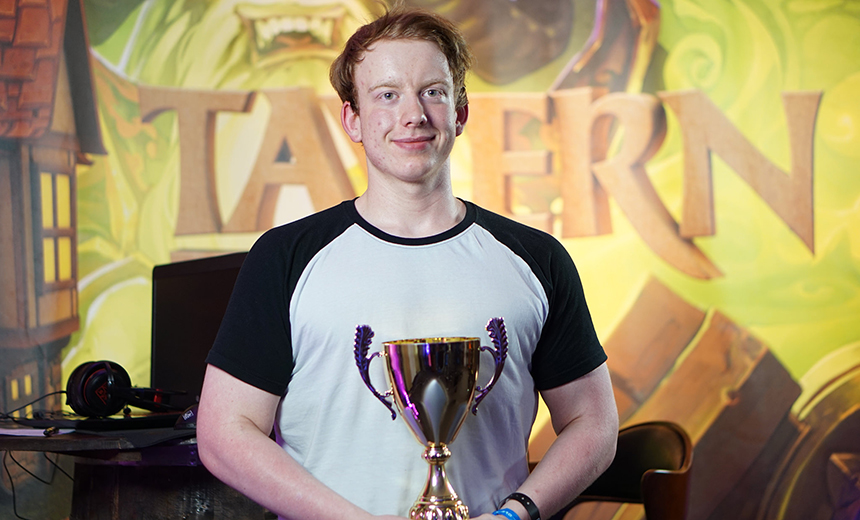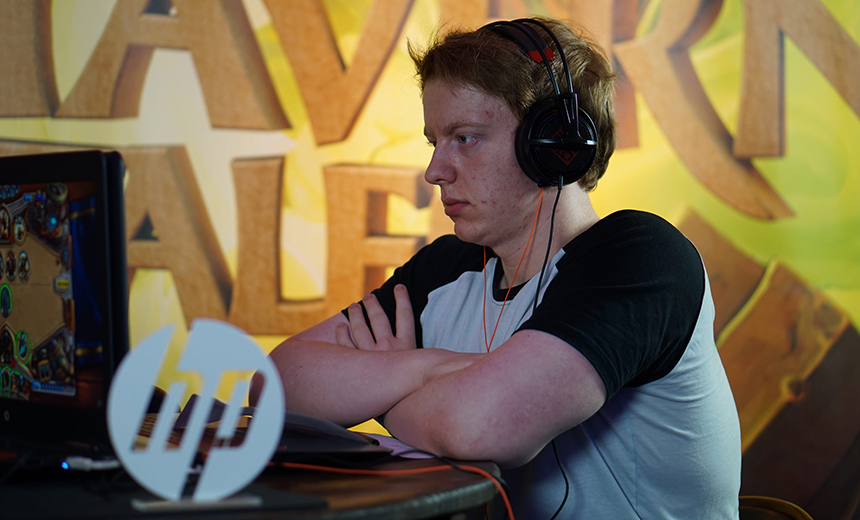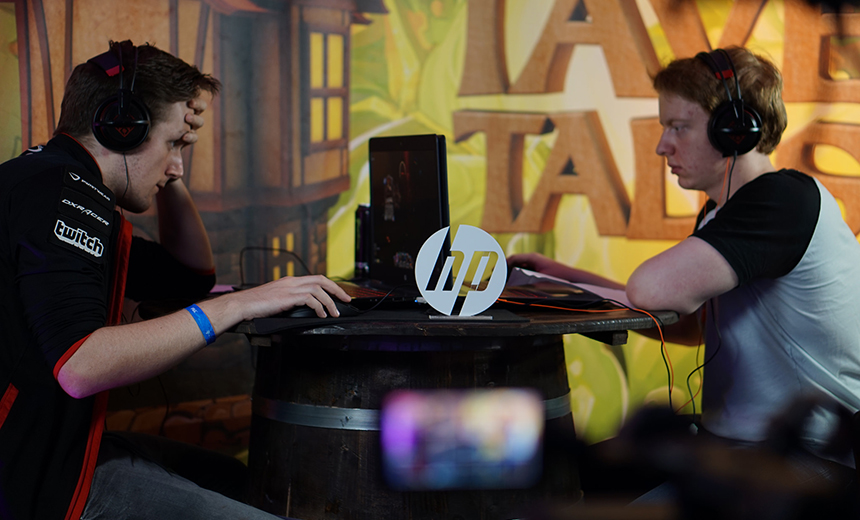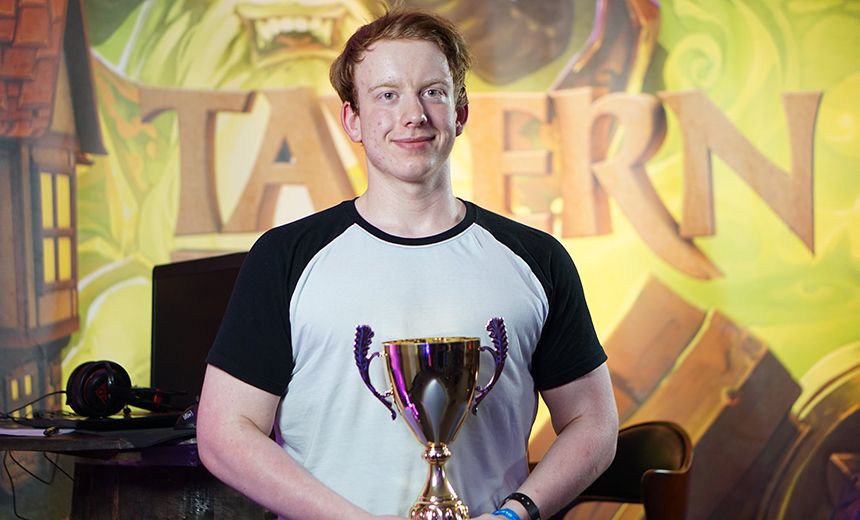
In October of 2014, something unique was birthed into the Hearthstone scene: The Viagame House Cup.
On the surface, the House Cup is like any other Hearthstone tournament of the time. Eight popular streamers are invited to ensure the viewers are hooked. Another eight are selected through qualifiers. All are gathered in an apartment over the weekend – a page directly from the TakeTV’s HomeStory Cups manual – and are enticed with a five-figure prize pool.
And if that was that, the House Cup would’ve been long forgottens as yet another drop in the sea of countless, unimaginative Hearthstone invitationals which defined the landscape of the game in its earliest days. But House Cup was more. In cooperation with the players and casters, the crew behind the tournament designed a format never before tried in Hearthstone. Copying a core element of the MOBA genre, House Cup had the players prepare a deck for each of the nine classes and grind them through an elaborate pick and ban phase before every match.
Viagame's pick/ban approach to Hearthstone was a game changer.
This layered approach to Hearthstone competition was a game changer. The format required out of the box thinking and took the competitors out of their comfort zones. The great strategists present navigated the pick/ban process with grace, baiting their opponents into unfavorable match-ups, while dodging those themselves. Heavily teched decks designed to counter specific strategies which are rare in traditional Hearthstone had their fifteen minutes in the spotlight, all because of this game before the game. Watching this tango was an analysts’ heaven and a rare chance for the viewers – casual and invested alike – to really understand the thought processes of Hearthstone’s most esteemed geniuses. After three days of battle, Aleksandr “Kolento” Malsh hoisted the trophy, affirming himself as the best player of that year.
In 2015, Viagame hosted two more tournaments – one in March and another one in May – with promises of organizing recurring events throughout the year in various exotic locations: an ancient Romanian castle from the legends, a beach house on an azure ocean, a cabin in the mountains.
Only one of those was actually delivered and after visiting Count Dracula’s castle for their third gathering, the House Cup, like many other esports initiatives before it, went dark. The nine-deck pick/ban format was lost and never attempted again...until this September.
The announcement of the 2016 Hearthstone Championship Tour (HCT) largely reformed how Hearthstone competition is executed, but some of the practices from last year remained. To be eligible for HCT points, third party tournaments had to follow the rules, rules which were severely limiting of format freedoms, and organizers were left with a choice between using Last Hero Standing or Conquest – the two standard and most popular formats in Hearthstone. Even a little detour would rob them of HCT points and diminish the value and importance of the tournament. A monotonous and bleak string of tournaments was thus created, which by the end of the official HCT point-gathering season in August had alienated not one or two fans, but a significant portion of the viewer base.
Once the HCT door closed, however, another one opened for organizers. One of the first to take advantage was PGL, who were working on bringing back the legacy of the House Cup format at DreamHack Bucharest. Titillation was in the air.
Although PGL’s delivery lacked compared to Viagame’s, especially when it came to emphasizing the pick/ban phase which was the core of the whole nine-deck format, more than 30,000 viewers were glued to their monitors, watching their favorite players once again deckbuild with no constrains and mind-game each other before even playing a single card.

The viewers expected a slaughter. They got it.
With Sebastian “Xixo” Bentert, Jan “SuperJJ” Janssen and Thijs “ThijsNL” Molendik in attendance, among many other prolific names, one Nicklas “Tessin” Dittmer was barely considered as a potential winner. The Dane, who got some exposure by finishing top eight at DreamHack Summer a few months ago, was supposed to go out in the first round. No way could he survive the skill-intensive format in a group with SuperJJ, Dima “Rdu” Radu and Jan “Ekop” Palys, all at the peak of their careers.
According to Tessin, though, not only was his underdog status not a disadvantage, but it also put him in prime position to win the group. What Tessin had was the luxury of researching his opponents’ playstyles through watching them compete on stage in countless games. No line-up composition, deck tech or style of play remained a mystery to the Dane.
Tessin ended up playing both of group’s favorites and through spot on reads on their playstyles ended up dropping just two games on the way to the top seed.
Coming into the top eight playoffs, Tessin was paired with probably the last player he wants to face. A tournament god, a GosuAwards nominee, his own practice partner and the current best player in the world: Sebastian “Xixo” Bentert.
In the eyes of everyone, Xixo was by far and away the likeliest contender for the title. His win record hadn’t dropped below 60 per cent since May. He had won the $50,000 StarSeries finals, dropping just one series on the way and his winnings were approaching $70,000. He shared a team with Sebastian “Ostkaka” Engwall, the reigning world champion, and Frederik “Hoej” Nielsen, another player who is a model of consistency – two of the best practice partners a player can wish for. The viewers expected a massacre. And they got it.
Not willing to take any risks, Tessin banned Xixo’s Yogg Druid right off the bat and later disposed of his Warrior and Warlock, too, leaving the Na`Vi marquee down to Shaman, Rogue and Hunter, a line-up which could easily destroy Tessin’s third pick of Paladin and can put a lot pressure on his Warrior. The Dane wet for his third and most viable class in this situation: Hunter.
In less than 25 minutes, Xixo was sent to the lower bracket and the scoreboard reads a flawless 3-0 for Tessin.
Though both Xixo and Hoej helped Tessin prepare for PGL Bucharest, testing on the ladder and adapting his decks played an equal, if not larger part in his success.

Preparation for a tournament, while important, will only get you so far in a format like PGL’s where you have to slalom around all nine classes to make sure you get as much advantage as possible before the match begins. When it comes to the pick/ban phase, two paragons of the game left a lasting impression on Tessin: Stanislav Cifka and SuperJJ. The former is a chess and Magic: The Gathering player, famous for his unmatched level of mindgaming and planning, who is expected to excel in such a complex format, while the latter is heavy contender for year’s best player, a contender with seemingly no weak spot and celebrated as a Rogue and Warrior expert.
They also shared a very particular approach to the nine-deck challenge, which ended the lives of all but one player. The sole survivor Tessin explains:
They didn’t ban the best decks in the game. On the contrary: They baited their opponents into picking them and then countered them.”
With all the games he played during his weekend in Bucharest, Tessin got to prove his championship was no fluke. He dropped no more than one game each series. He defeated StanCifka and SuperJJ – the silver and bronze medalists of the tournament – twice each. He blanked his practice partner and world’s best player in the first playoffs round. He 3-1’d the only player with multiple DreamHack titles. He prevailed despite being the least known and least televised player of all fourteen invites, grinding through the most demanding format invented in Hearthstone. And he wishes there was more of that.
Photos: PGL Flickr

